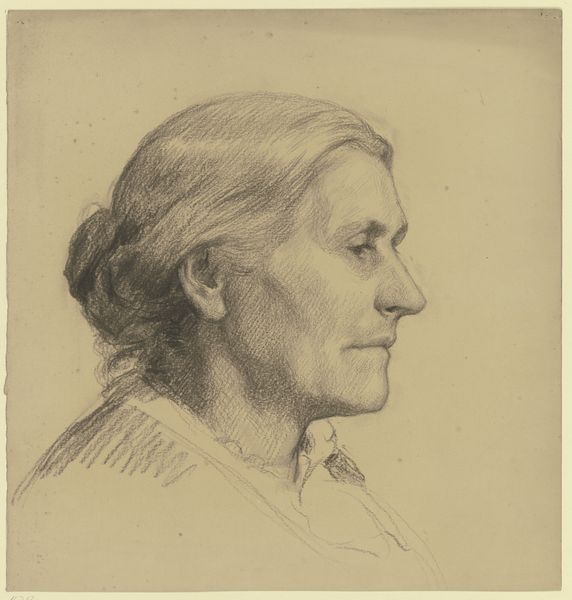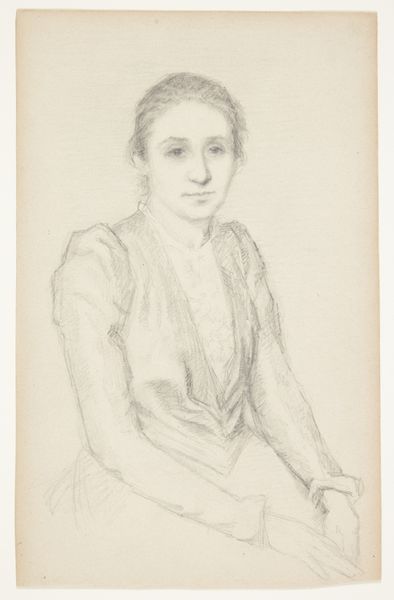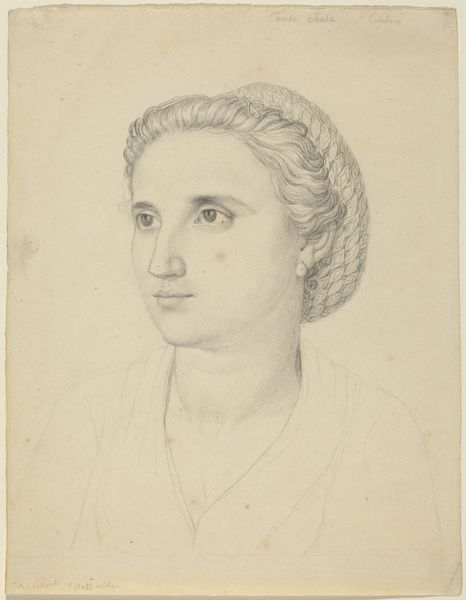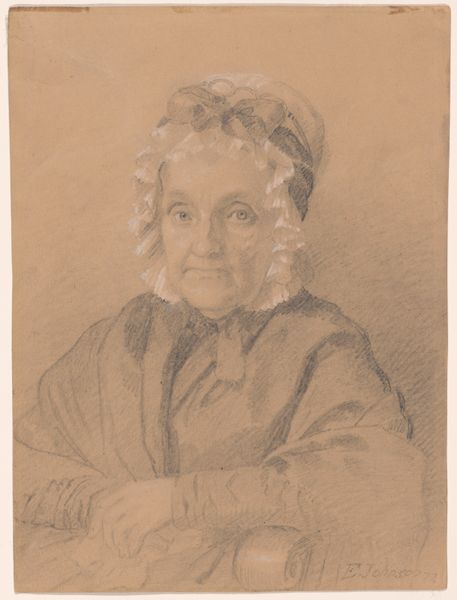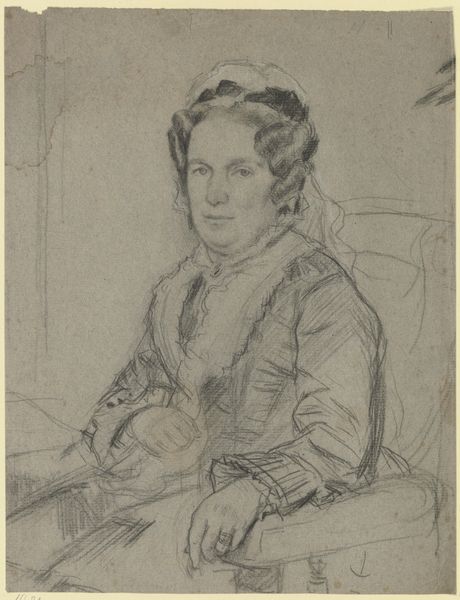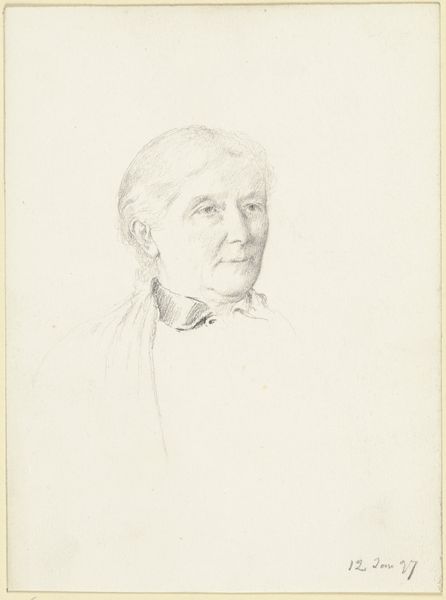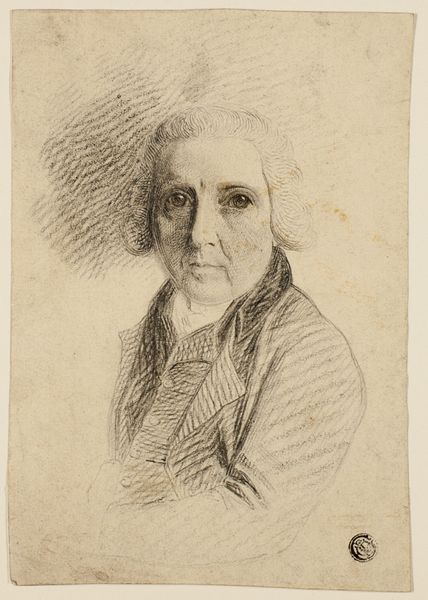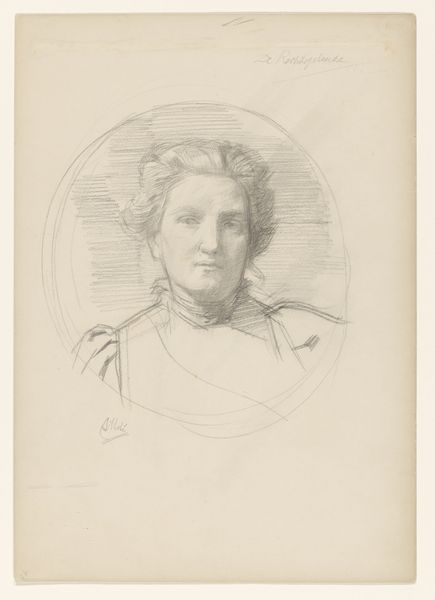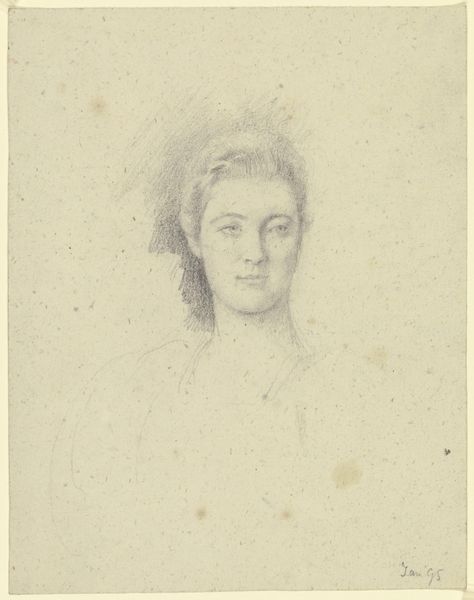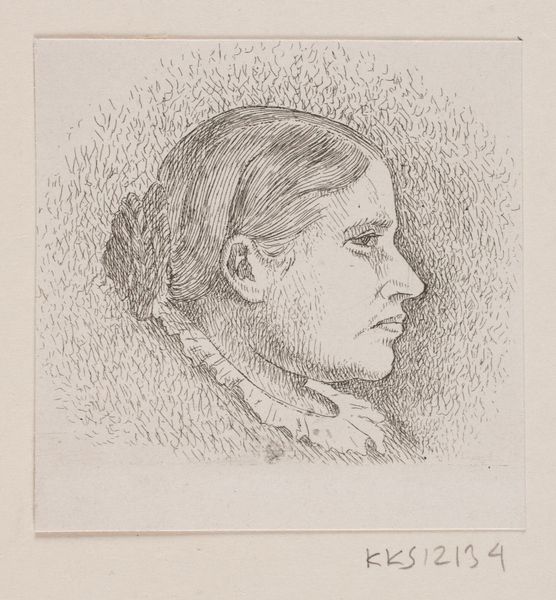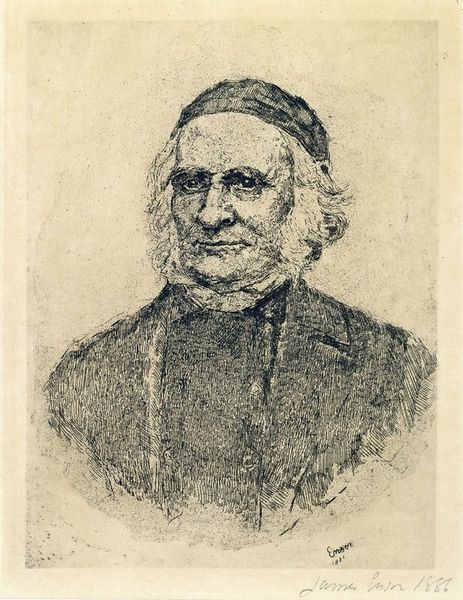
drawing, paper, chalk
#
portrait
#
drawing
#
charcoal drawing
#
paper
#
romanticism
#
chalk
#
portrait drawing
#
realism
Copyright: Public Domain
Curator: Let’s turn our attention to this intriguing drawing from the Städel Museum, "Bildnis einer älteren Dame nach rechts," which translates to "Portrait of an Elderly Lady Facing Right." The work is attributed to Otto Scholderer. The primary mediums used here are chalk and charcoal on paper. What are your initial impressions? Editor: Stark and introspective. The artist's choice of charcoal lends the piece a real sense of immediacy, but the gray-brown paper and the subtle highlights of white chalk convey a sense of aged distance. I am curious about the sitter's narrative, what she has seen and overcome in her life, rendered so exquisitely here. Curator: Indeed. The work resonates with Realist and Romantic sensibilities that focus on capturing honest depictions while imbuing them with emotional resonance. The older woman’s plain clothing is suggestive of someone outside of the upper class, though the slight detailing around her collar suggests this woman is probably of the educated middle class, emphasizing the social and cultural spheres surrounding artistic representations during this era. It encourages an analysis of social class in art. Editor: Precisely, and it is vital to address that social and class context because the choice of representing older women in the arts is not without meaning. She gazes to the side, composed. To view her as stoic might overshadow her experience as a woman who lived through much change. I can't help but think about her rights, her place in her society, her access to influence. Curator: Scholderer’s work offers more than a visual depiction, though. The deliberate arrangement of light and shadow invites us to investigate our preconceived notions about the past. The history of art isn't just about aesthetics or movements; it reflects evolving societal norms. Editor: It’s a reminder of art’s social and political power and, importantly, a prompt to critically examine those forces in our current moment. The art we choose to view, or not view, becomes very significant. Curator: This detailed portrait helps bring us closer to an individual from history, but the image remains charged and deeply evocative as an icon, so perhaps it is a bit timeless. Editor: Exactly. That is something to pause over today: timeless and timely, still calling us to look deeper.
Comments
No comments
Be the first to comment and join the conversation on the ultimate creative platform.
